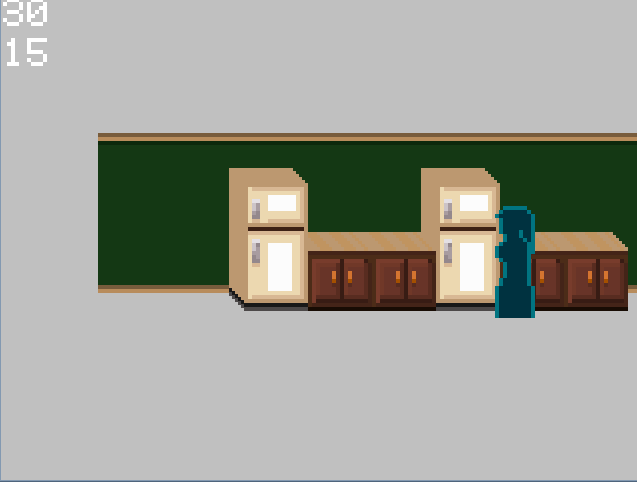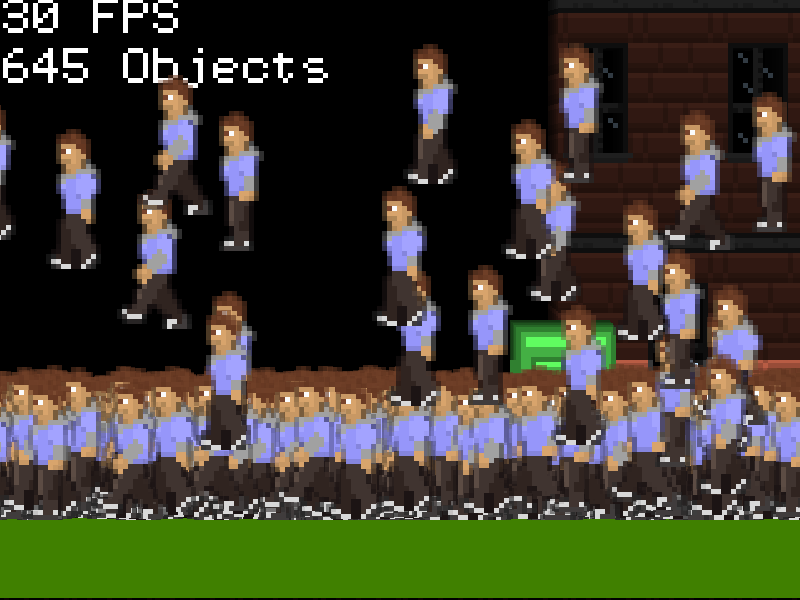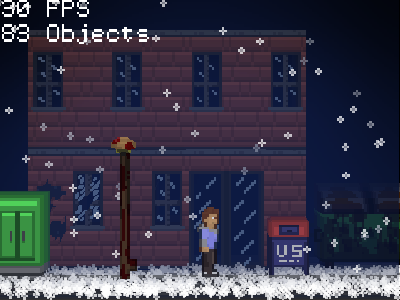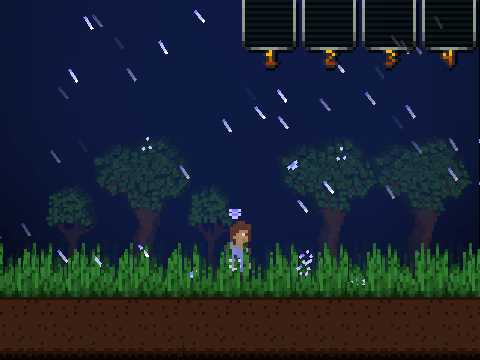Originally consider for a competition and then I realized I don't have that kind of time. Now its a slow cook but progressing project. Shield Breaker is on hold due to creative block.
Code named Econapo, for lack of a good title, is a simple Game Maker project that simulates effects I've played with in Freebasic. The freebasic experiment was a simulation of voxels(3d pixels) but used flat planes and a fixed perspective. Econapo simulates a voxel like effect through panning of 20 individual tile layers at various speeds, creating an illusion of 3d depth. Another feature is that the world map exist as a perceived 3d space, as you can go the four main directions (north, south, east and west) at the ends of a map or at alleys and crosswalks.
Each city block usually consists of 4 directional views, maps are labeled as such: 'o_south00x00', with o standing for outside, and the coordinates loosely based on a drawn out map. Effects like fog, rain and snow benefit from the multi-layer approach to create nice effects.
Basic Concept and Plans
Simulating a 3d world in a low-res form, the actual rendering view is 160x120, projected to 400x300, with full screen and stretching working just fine. I used views to keep the pixelation from being dithered, as expanding the view in GM's option tends to add a blur over the pixelation. The blocky look is key to making the panning look nice and keep a general classic look to it.
Levels are based of a sample map and some concept drawings of buildings, positions are placed with objects in the map(deleted after processing) and then tiles painted to the layers with offset depending on the start position of the view.
The current concept of the story involves the player arriving to a city left near deserted by economic collapse. Some drifters, squatters and residents lurk with the city while wild creatures have begun to take over the vacant streets. Your vehicle is out of gas, and of course the station is closed and possibly bone dry.
There will be simple combat in the form of melee weaponry against the wild animals, fighting is not always the best option as there will be no firearms at hand, and you must find your first weapon. Running and darting down street or entering buildings may be your only escape. However not all animals encountered will be hostile, some will just watch you, but others may chase you if you're running by. You can use food items to distract or gain the trust of some animals.
Items will have multiple uses, some can be combined with others, some act as containers for fluids. You will need to consume food and water from time to time to surive and heal. You can also get sick, so you may need to find some kinds of medicine.
Humans you meet in the city will have impression values that change depending on your interaction with them, some may dislike you from the start or simply not trust you.
Navigation is pretty straight forward, you can walk/run/crouch/crawl. No plans on jumping really. No gravity or friction is being used, nor are there any blocker objects.
Possible Future Development
I would eventually like to break from GM to produce the project on a different code base. Currently leaning towards Java and possible Android developement, which may be feasable due to low color usage of the images(tile map total under 200 unique colors) and thus small png files, additionally tools be Kevin Silverman to further optimize and shrink said files. The major challenge would be to project the image pixelated like the gm version, and have Android handle 20 layers of 674x180 sized maps. Grant it not all space will be used. So resource size shouldn't be an issue, but graphical techniques will be a little tricky.
Additionally, using one of those dandy GM port to web, not the Yoyogames one, I do plan to imbed a playable version of the final.
Screenshots and Video Captures

Early development stage

Interior design testing w/ unlimited FPS rate.

Object on screen stress test on a Acer with Intel Atom, stopped once FPS hit 30 from an unlimited setting.

Snow testing, still kind of bogs down things.

Samples of raining.
Run around the block.
Snow test in action, even though its has a live recorder sucking up cpu, the FPS loss is due to over population of tile sprites from the snow...needs some kind of trick to speed it up.